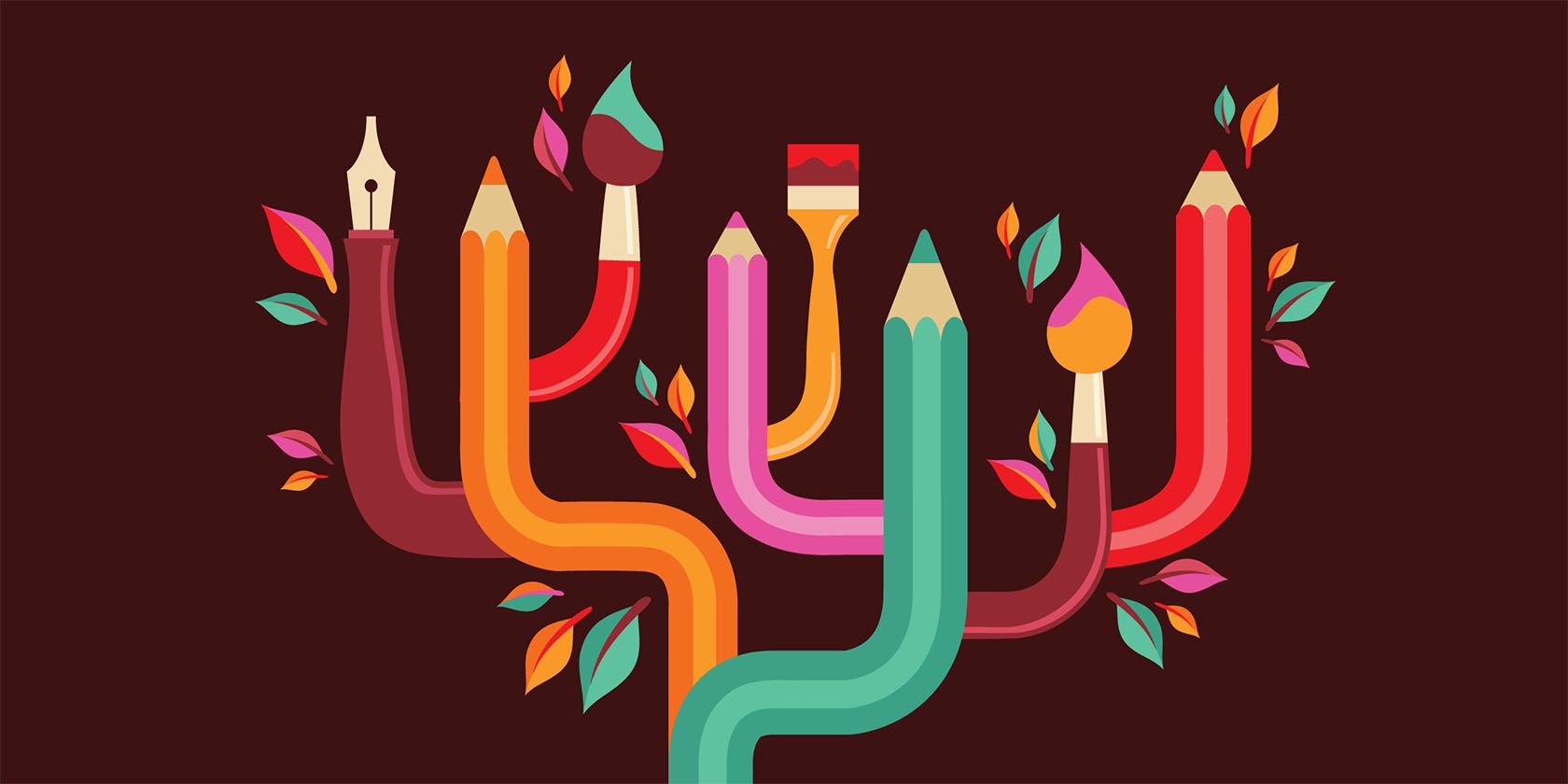We live in a peculiar time. On the one hand, art and creativity are both seen as positive traits, particularly because they're important for being a well-rounded person. On the other hand, someone who seeks an art degree is often viewed as a first-rate sucker.
Today, this dichotomy manifests in the form of a common question: If I want to pursue a career in digital arts or graphic design, is it worth getting a degree? Can I get by without one? What exactly does the degree do, anyway?
There are expert artists and industry professionals on both sides of the argument, so there isn't a correct answer -- which is immensely frustrating if you're trying to decide one way or the other, I know -- but hopefully we can clear up some of the confusion for you.
Practical Benefits of an Art Degree
We go to school so we can "learn" -- at least, that's what most of us think. If higher education is simply about gaining knowledge and learning skills, then it would be nowhere near necessary. After all, we have libraries and workshops and online tutorials, don't we?
This is the same reasoning that some use to discredit the importance of an art degree. Why pay $50,000 for instruction when you can learn the same stuff on your own for free? And I admit, it's a tempting stance to take.
But the first real value in an art degree is a guided curriculum. It's one thing to learn techniques piecemeal and to cobble all of that knowledge together on your own; it's another thing to learn from those who have struggled before you and know the best path to take, from the fundamentals to the advanced.
Some people are naturally talented -- there's no doubt about that -- but even they need proper instruction if they're going to break through plateaus and maximize their potential. At the very least, the education will help expand the skills they already possess.
But more useful than that, at least in practical terms, is the ability to learn with others. It takes a few years to earn an art degree, and during that time you'll be interacting with both instructors and fellow students.
The ability to work as a team is crucial for a graphic designer because you're always going to be doing work for an employer (e.g. Disney) or a client (e.g. freelance). If you can't communicate well, you won't produce satisfactory work, and an art degree can help you develop those skills.
But it's also an awesome opportunity to start building a network that may come in handy later, such as when finding work or looking for potential partners. The value of a business connection cannot be underestimated.
And ultimately, that's why an art degree matters: for employment. It's proof that you've been trained and educated in a complete, accredited curriculum. It shows that you have experience and that you performed well enough to earn that piece of paper.
If you're going to be a graphic design freelancer, a degree makes you seem more experienced to potential clients and they'll be more confident to hire you. If you're going to work as part of a studio or company, a degree is often necessary even for entry-level positions.
And in both cases, the strength of your degree provides leverage for you to negotiate higher rates.
Why Art Degrees Are Overrated
It's clear that art degrees aren't completely worthless, but the real question is whether or not the benefits justify the costs of earning said degrees. For most, this is the real heart of the question, "Do I need an art degree?"
Let's take a look at 2015 tuition costs for several art schools in America:
- Yale University School of Art ($35,300)
- School of the Art Institute of Chicago ($43,140)
- California Institute of the Arts ($43,400)
- Pratt Institute ($44,580)
- Otis College of Art and Design ($41,854)
Without financial aid, that's a lot of money to pay for an education. Most students will rely on loans to pay their way through, and that's a dangerous amount of money to borrow. If you can't leverage that money into a high-paying art career, you risk being buried in debt for the rest of your life.
There are other colleges that push tuition into the $50,000 to $60,000 range, but the problem is that the average income for a graphic designer in the United States (as of June 2015) is $30,000 without bonuses or overtime.
Other colleges can charge exorbitant tuitions for engineers and actuaries because those professions make enough income to make their degrees worth it. Paying off art school debt, on the other hand, will be nothing but a huge long-term burden for you.
Faced with this knowledge, the smartest artists end up pursuing a career in an unrelated field and practicing art in their free time. Others decide that the education provided by art school isn't worth the tuition and resolve to forge a career from scratch -- and some of them even succeed.
For example, self-employed photography can be lucrative and many photographers make a living without a degree in photography. The same can be true for graphic designers and other digital artists, but the foregoing of degrees is replaced by the necessity of a top-notch online portfolio.
So yes, you can get by without an art degree but only if you have an impressive portfolio. Not just good, not just great, but impressive. Depending on your own aptitude, building said portfolio might even cost you more time and money than earning a degree, but that's your risk to take.
One final caveat: if you ever want to teach art in a professional capacity, you'll need a degree (unless you become particularly famous). A Bachelor's degree is typical for grade school to high school, but a Master's degree is required for colleges and universities.
How to Get an Art Education Online
So where do you stand? If you think an art degree is the right decision for you, then embrace it and make the most of it. Find a good school, sink in as much effort as you can, and don't let it go to waste once you have graduated.
But for those of you who think the degree may be a mistake, here's some good news: there are plenty of awesome resources on the Web for learning and practicing art. Many of these resources are free, but even the paid ones are drastically more affordable than enrolling in school.
For starters, we recommend these Lynda.com courses for digital artists. Lynda subscriptions start at $25 per month, but one subscription is all you need to unlock thousands of courses across hundreds of topics. The courses are effective, so the price is well worth it.
If you aren't ready to invest money just yet, you can start with these free Adobe Illustrator lectures (which is foundational for graphic design) along with these free Adobe Photoshop lectures (which are mainly for photographers, but the skills do transfer over).
Looking to build up some experience? Consider participating in these crowdsourced design contests. If you do well, you can even make some money!
And if you get through it all and decide that maybe you'd be more interested in a non-arts career after all, here's how you can switch over to a great tech career.
Do you have a degree in art? Share your thoughts and advice with us! If you're thinking about a career in art, post any questions or reservations you have below.
Image Credits: Creative Paths Via Shutterstock, Male Art Student Via Shutterstock, Design Team Around Table Via Shutterstock, Tuition Costs Via Shutterstock, Female Graphic Designer Via Shutterstock






